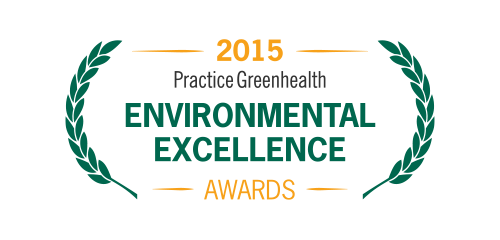What
Drove the Success of MD H2E?
Joan Plisko, PhD, Director
After
10 years of operation from the University of Maryland, Baltimore – seven years
at the School of Nursing and three years at the Center for Integrative Medicine
at the School of Medicine – MD H2E is closing December 31st 2015. MD
H2E was initially developed as a short-lived statewide initiative to improve
worker, patient, and community health through the elimination of mercury and
toxics from aging and inefficient medical waste incinerators. The environmental
and health footprint of hospitals was much larger than MD H2E staff first
anticipated, so we revised our mission: to catalyze environmental health
and sustainability in Maryland’s health care community.
MD
H2E was a fantastic success. Here are five reasons I believe this to be true:
1.
Power
in the People: MD
H2E cultivated and empowered a diverse set of people and created meaningful
collaborations. With over 30 staff coming and going over the course of a
decade, Barb Sattler, Louise Mitchell, and Joan Plisko spearheaded and managed
the initiative over its lifespan. Our power was our people! We cared. The MD
H2E Advisory Board was a huge attribute as well, with two members participating
for the entirety – Laura Armstrong of Maryland Department of the Environment
and Cecilia DeLoach of Practice Green Health.
2.
Multipronged
Approach: MD
H2E utilized a multipronged approach to assist participants in developing and
implementing programs. We conducted audits, held campaigns, wrote case studies,
held on-site meeting, initiated pilot projects, launched leadership councils,
and more. From the basement to the boardroom and from anesthesia to x-ray, MD
H2E staff met hospital staff where they were. MD H2E staff nurses visited
hospitals nurses on different shifts to deliver messages relating environment
to health and MD H2E staff presented at a variety of association conferences
and meetings.
3.
Created
Community: MD
H2E created a learning and sharing community where members relied on one
another for solution building and problem solving. We utilized technical
resources of Practice Green Health and Health Care Without Harm to engage and
connect folks regionally and nationally. For five years we held the
Environmental Excellence in Health Care conference; and we launched two
leadership councils: the Chesapeake Food Leadership Council and the Maryland
Health Care Sustainability Leadership Council.
4.
Awarded
and Rewarded: MD
H2E awarded and recognized participants for their successes; and publicized milestones.
Over six years time we gave out 25 Trailblazer Awards to 15 distinct
hospitals/health systems, representing 25 percent of the hospitals in Maryland.
We also recognized Environmental Health Nurses and an Environmental Health
Physician. In 2015, five Maryland hospitals were listed amongst the fifty
greenest hospitals in America. MD H2E won the Practice Green Health Champion
for Change award every year from 2007-2015!
5.
Got
the Word Out: MD
H2E utilized multiple modes of communication to “get the word out” to as many
interested stakeholders as possible. Over 10 years, we penned 100 environmental
health and sustainability newsletters as well as 15 newsletters, dedicated
specifically to sustainable foods. At the conclusion of our initiative, our
list sev had grown to 2,000 people.
Overall, our
power was in our people. We created and maintained community and enjoyed every
moment of it. And our timing was just right!
Thanks to all of
you for being part of this fantastic community and journey.

